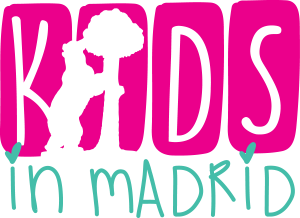The relationship between mind and body is clear. Just as physical illness influences our mood and causes fears or concerns, psychological and physical problems can cause physical symptoms. Psychological factors may, therefore, be the cause of symptoms of physical illness or act as triggers, and over a period of time cause an illness to be influenced or aggravated as a result. Psychosomatic illnesses are very common. Almost one child in ten suffers from a chronic problem before the age of ten.
The most common problems are asthma, abdominal pain, loss of appetite, insomnia, headaches, and bedwetting. The stage from psychic to somatic in children is very quick and much easier than in adults, so in fact you can say that children, in particular infants, are essentially psychosomatic. Children’s difficulty with communicating emotions verbally, their cognitive immaturity and limited vocabulary, is considered to be one of the reasons why children’s distress is expressed through physical symptoms.
But … what are psychosomatic illnesses?
Someone is considered suffering from a psychosomatic illness when they present one or more physical symptoms and following a medical examination, these symptoms are unexplained. Furthermore, although the person may have an illness, the symptoms are excessive compared to the norm. Traditional medicine tends to focus almost exclusively on physical symptoms of an illness or disease, forgetting the real cause of the problem.
What do we do when something is hurting?
 The first thing adults or children tend to think when something irritates their skin or their tummies ache is that a physical illness is the cause of the pain. However, in the vast majority of cases, the hidden influence of the psyche plays an important role in the evolution or worsening of physical symptoms.
The first thing adults or children tend to think when something irritates their skin or their tummies ache is that a physical illness is the cause of the pain. However, in the vast majority of cases, the hidden influence of the psyche plays an important role in the evolution or worsening of physical symptoms.
Not all the symptoms and ailments are the result of a physical illness.
When we are stressed or under the weather (and the same goes for children) our defenses are lowered and this makes our bodies more vulnerable to disease, generally our weakest organ is the most affected. Many psychosomatic disorders emerge at specific ages, as they relate to the maturity and development growth of certain parts of the body and to psychological development. The weakest part of the body according to age and most likely to cause issues are:
- Eczema from 8 to 24 months
- Stomach pains from 3 to 4 years old
- Asthma around the age of 5
- Headaches from 6 to 7 years
There are symptoms that may have a different meaning depending at which age it occurs – whether at 2, or 6 or 12 years. For this reason, it is important to consider the disorder in relation to the child’s developmental stage and the specific reactions and problems it causes the child.
What are the common misconceptions?
Generally speaking, it’s thought that psychological difficulties cause sadness, crying, feelings of inferiority or other symptoms unrelated to the physical body. However, this is a complete misconception. Our emotions influence our bodies just as our bodies influence our emotions.
It’s commonly observed in “children ” with a feeling of abandonment (adopted children, children who find it difficult to adapt to the arrival of a sibling …) As they can’t get the direct affection they were for, so they express it through their bodies unconsciously in the hope of receiving more attention and affection.
The child should be given more affection and it would be wise to consult with a child specialist. The specialist will be able to shed light on the of the psychosomatic symptoms and what they relate to.
Psychosomatic illnesses can be grouped anatomically
- Respiratory tract: asthma
- Skin; eczema, atopic dermatitis
- Head: headaches, migraines, chronic angina, chronic otitis
- Other: abdominal pain, sleep disorders, eating disorders, digestive issues
These are the most common:
CHILDREN’S ASTHMA
A somatic and a psychological element is at play – an allergenic agent that causes the allergy, however sometimes the allergy is triggered without this agent present. What usually happens is that the child has an attack in the presence or absence of a person, in one particular place or circumstance, totally unconnected to and away from the allergenic product.
The psychologist will review family relationships and other factors that can be triggering the attack. As a result, the treatment has to be mixed medical and psychological)
ECZEMA AND ATOPIC DERMATITIS
skin lesions have both physiological and psychological origins. The skin is the barrier between the individual’s inner world and the outside world. It usually affects sensitive or anxious children. That anxiety, a congenital predisposition, is expressed as eczema.
CHILDREN’S MIGRAINES AND HEADACHES
The sudden onset of headaches. Usually appear in school-age children. It’s a psychological mechanism with is expressing “not able to think” an issue which is engulfing the child for him very unpleasant and from which he can’t escape (for example the separation of his parents).
There are no magical recipes on what to do about these psychosomatic illnesses. But it ‘s important to understand them. Realize how your children are feeling and affected, how they can feel good or bad, why they can be angry or concerned. From there, approach them and help them to feel understood.
There are more tips for parents on our blog. Check it out!
